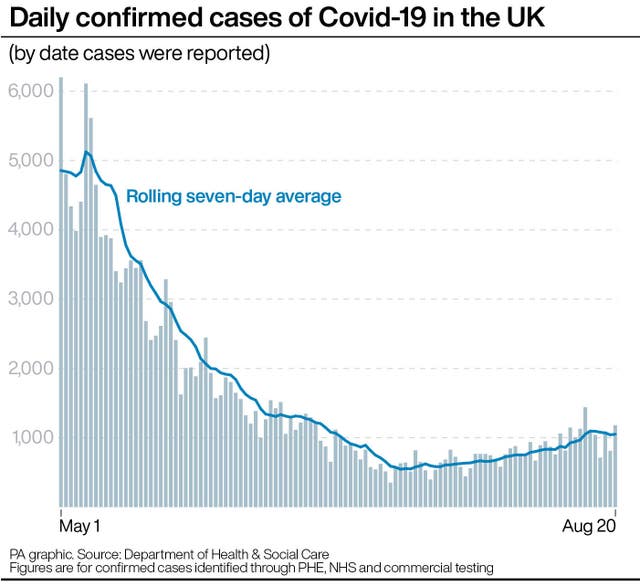There is a risk the overall coronavirus (Covid-19) pandemic in the UK is growing as figures for the reproduction number (R value) suggest it has risen above 1.0. Data released on Friday by the Government Office for Science and the Scientific Advisory Group for Emergencies (Sage) shows the estimate for R across the UK is now between 0.9 and 1.1. This is an increase from the range of between 0.8 and 1.0 one week ago.
Transmission
The growth rate of coronavirus transmission, which reflects how quickly the number of infections is changing day by day, has also changed slightly across the UK since last week, with early indications the value may be increasing. The latest growth rate for the whole of the UK is between minus 3% to plus 1%, a slight change from between minus 4% to minus 1% last week.
The growth rate means the number of new infections is somewhere between shrinking by 3% and growing by 1% every day. The most likely value is towards the middle of the range, experts say.
Scientists say there have been indications these values may be increasing, with estimated ranges rising slightly from previous publications. The R number represents the number of people each coronavirus positive person goes on to infect.
In England, the R is between 0.9 and 1.0, and the growth rate is minus 3% to zero. Recent changes in transmission are not yet fully reflected in the estimates because the data used to calculate R and growth rate reflect the situation from a few weeks ago. It is also important to recognise the figures are estimates and there is a high degree of uncertainty with them, the experts say.
Delays
A time delay between initial infection and the need for hospital care usually means it may take between two to three weeks for the changes in the spread of coronavirus to be reflected in the estimates. But models that use coronavirus testing data, which have less of a time delay, indicate higher values for R in England, the Government Office for Science statement said. It added:
For this reason, Sage does not have confidence that R is currently below 1.0 in England.
We would expect to see this change in transmission reflected in the R and growth rate published over the next few weeks as we gain more certainty of what is currently happening.
The scientists caution estimates of R and growth rate per day are less reliable and less useful in determining the state of the pandemic when disease incidence is low, or where there is significant variability in the population, for example during local outbreaks. They say when this is the case, estimates of R and growth rate become insufficiently robust to inform policy decisions. Both are average measures and will smooth over localised outbreaks or over short periods of time.

Regional Differences
- In the east of England, the growth rate has changed from between minus 5% and minus 1% to minus 3%-zero. The R number remains unchanged from last week at 0.8-1.
- In London, the growth rate is between minus 2% and plus 1%, compared to between minus 4% and zero last week. The capital has seen the R value change from 0.8-1 to 0.9-1.1.
- The Midlands has a growth rate of minus 4% to zero, compared with between minus 5% and minus 1% last week. Its R value is unchanged at 0.8-1.
- In the North East and Yorkshire, the growth rate remains unchanged since last week and is somewhere between minus 4% and zero. Its R number is 0.8-1.
- The growth rate in the North West is between minus 2% and plus 1%, a slight change from between minus 3% and plus 1%. The R value here is 0.9-1.1.
- In the South East, the growth rate is between minus 4% and zero, compared with between 5% and minus 1% last week. The R value in the region is 0.8-1.0.
- The South West has a growth rate of minus 1% to plus 2%, compared to between minus 5% and plus 1% last week. Its R value is above one, with a range of 0.8-1.1.










